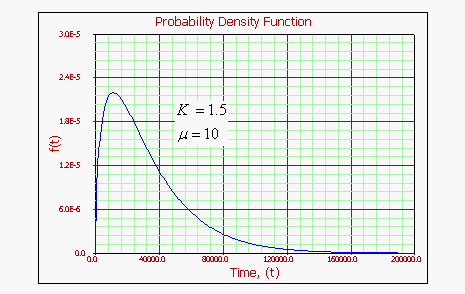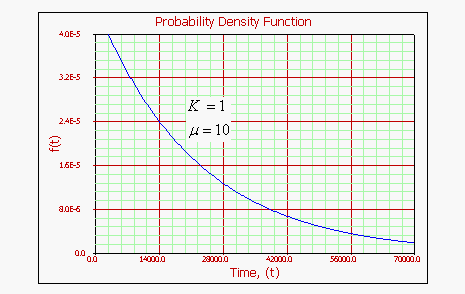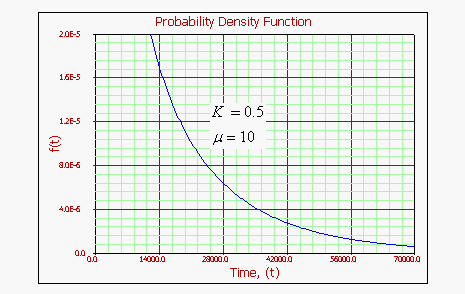The Gamma Distribution
The Gamma Distribution
The gamma distribution is a flexible life distribution model that may offer a good fit to some sets of failure data. It is not, however, widely used as a life distribution model for common failure mechanisms. The gamma distribution does arise naturally as the time-to-first-fail distribution for a system with standby exponentially distributed backups, and is also a good fit for the sum of independent exponential random variables. The gamma distribution is sometimes called the Erlang distribution, which is used frequently in queuing theory applications. [32]
Gamma Probability Density Function
The
where:
and:
where
The Gamma Reliability Function
The reliability for a mission of time
The Gamma Mean, Median and Mode
The gamma mean or MTTF is:
The mode exists if
The median is:
The Gamma Standard Deviation
The standard deviation for the gamma distribution is:
The Gamma Reliable Life
The gamma reliable life is:
The Gamma Failure Rate Function
The instantaneous gamma failure rate is given by:
Characteristics of the Gamma Distribution
Some of the specific characteristics of the gamma distribution are the following:
For
• As
•
• If
• If
• For a fixed
As
For
• Gamma becomes the exponential distribution.
• As
• As
• The
•
• The mode does not exist.
For
• As
• As
• As
• The
• As
• As
• The mode does not exist.
Confidence Bounds
The only method available in Weibull++ for confidence bounds for the gamma distribution is the Fisher matrix, which is described next. The complete derivations were presented in detail (for a general function) in Chapter 5.
Bounds on the Parameters
The lower and upper bounds on the mean,
Since the standard deviation,
where
If
The variances and covariances of
Bounds on Reliability
The reliability of the gamma distribution is:
where:
The upper and lower bounds on reliability are:
where:
Bounds on Time
The bounds around time for a given gamma percentile (unreliability) are estimated by first solving the reliability equation with respect to time, as follows:
where:
or:
The upper and lower bounds are then found by:
A Gamma Distribution Example
Twenty four units were reliability tested and the following life test data were obtained:
Fitting the gamma distribution to this data, using maximum likelihood as the analysis method, gives the following parameters:
Using rank regression on
Using rank regression on



